(Featured Image Photo Credit: Epic Lab)
In the previous blog focusing on clinical trials, we discussed the significance of conducting clinical trials and also deconstructed the organizations behind several important registries for ongoing clinical trials. In this blog, we will dive a little deeper into the status of currently published clinical trials on clinicaltrials.gov. This filtered list of clinical trials was found after initially searching keyword “3D printing”. A few studies were excluded from the list as the investigators have withdrawn. A few completed studies were also disqualified as the publication does not show any actual usage of 3D printing after the study was completed. For interested readers, you can view our filtered and updated list here (Table 1). This list is in the order of the latest registered study to the oldest.
Table 1. Filtered complete list of registered clinical trials using 3D printing (ordered based on current enrollment number)
The status of these registered trials sheds light on the current status and future growth of the healthcare 3D printing industry. Conducting clinical trials is a time and capital-intensive activity, and it is not unusual it takes years and even decades to finally complete one. Out of the current list of registered clinical trials, we have found a list of studies that are marked as “complete”, and the focus of this blog is to see what they are and what these are telling us (Table 2). The order of this list is in the latest completed study to the oldest from November 2015 to April 2020.
Table 2. Currently Completed Clinical Trials (As of July 26th, 2020), order based on the most recently completed study to the oldest study.
Trends:
These lists are by no means complete as the keyword “3D Printing” does not always appear in all the registered studies, and it is our ongoing effort to discover these studies and share it with you. This blog provides a basic understanding of the general focus, trend, and significance of these completed studies. Subsequent blogs will dive deeper into each of these studies and their related publications.
Study Title/Outcome Measurements:
It is always important to solve problems worth solving. A glance at the completed studies is a good reflection on what we consider important and worth years of work to complete such clinical trials:
| Study Title | Outcome Measured |
| Single Implant Overdentures Fabricated Using 3D -Printing Technology | Patient satisfaction: Chewing function, overdenture retention measured using digital force gauge device, the Survival rate of overdentures and implant |
| Digital Assessment of a Full Digital (dental) Implant-Prosthetic Workflow for a Prefabricated Single Implant-Supported Restoration | 3D- Deviation of the implant |
| Surgical Planning w Patient-specific Pancreaticobiliary Disease With 3D Models | Compare the effectiveness of the solid model with CT screen, 3D-Standard Tessellation Language (STL) image and 1:1 scale model |
| Patient Satisfaction & Retention of Milled, 3D Printed and Conventional Complete Dentures | Patient satisfaction& Retention |
| Left Atrial Appendage Occlusion Guided by 3D Printing | Operating time|number of protheses|Implantation success rate|number of periprosthetic leak|anasthesia time|time of scopy|irradiation dose|Days of Hospitalisation|number of recapture|number of off-axis prostheses|number of embolized prostheses|Effective complete occlusion of the auricle|prosthesis trombosis|procedural complications|complication |
| Immediate Loading and Fully Guided Surgery: Single Implants | Number of Participants With Implant Survival|MBL|Pink Esthetic Score|White Esthetic Score|Oral Health Impact Profile – 14 |
| Smartphone and 3D Printing Based Home Rehabilitation System for Chronic Stroke | Repetitions completed for each activity in the mRehab home program|Time to complete activity in the mRehab home program|Average smoothness per activity in the mRehab home program|Wolf Motor Function Test|Nine hole peg test|Difficulty rating Scale|Systems Usability Scale (SUS)|mRehab acceptance questionnaire |
| Impact of Pillboxes on Medical Adherence | Change in Medication Adherence|Change in satisfaction with pillbox|Feasibility of study implementation |
| Personalized Titanium Plates vs CAD/CAM Surgical Splints in Maxillary Repositioning of Orthognathic Surgery | Difference of the maxillary position|Intraoperative blood loss|Operative time|Translational differences of the maxilla|Orientational differences of the maxilla |
| Third Trimester 3D Printed Models Versus 3D Ultrasound Effects on Maternal-Fetal Attachment | Maternal Antenatal Attachment Scale (MAAS) |
| An Ankle-foot Orthosis Improves Gait Performance and Satisfaction in Stroke Patients | Kinematic analysis|10 Meter Walk Test (10MWT)|Numerical rating scale|The Quebec User Evaluation of Satisfaction with Assistive Technology (QUEST)|36-Item Short Form Survey (SF-36) |
| 3D Printed Models in Mohs Micrographic Surgery | Mohs Quiz|Change in State-Trait Anxiety Inventory (STAI) score|Change in Visual Analog Scale (VAS) Anxiety Score|Change in Visual Analog Scale (VAS) Understanding Score|Satisfaction Survey Score |
| 3D Printing for Nodule Localization | Localization distance |
| A Study to Evaluate the Accuracy of a Breast Cancer Locator (BCL) in Patients w Palpable Cancers | The Distance Measured by Pathology From the Tumor Edge to the Center of the Ink Spots, as Marked by the Black Inked Pins.|Positive Margin Rate|The Distances Between the Specimen Edges as Determined by the Breast Cancer Locator and by the Supine MRI/Optical Scan/ Tracker System|Mean Resection Specimen Volume |
| Value of 3D Printing for Comprehension of Liver Surgical Anatomy | The primary outcomes was the precise allocation of hepatic disease|Resection proposal of liver pathology|Time spent to judge tumor location |
| Stereolithographic Technique for Dentures | Evaluation of changes in Oral Health Impact Profile for Edentulous Patients (OHIP-EDENT)|Evaluation of changes in masticatory performances assessed with Visual Analogue Scale (VAS)|Evaluation of changes in denture retention with VAS|Evaluation of denture changes in aesthetic aspect with VAS |
| Application of 3D Printing Technique in Small Pulmonary Nodule Localization | Accuracy of Lung Nodule Localization|Procedural Duration of the Nodule Localization|Radiation Dose|Complication Rate |
| 3D-Printed CPAP Masks for Children With Obstructive Sleep Apnea | Change in CPAP Compliance at 1 month|Change in CPAP Leak Rate at 1 month|Change in residual AHI on CPAP at 1 month|Change in time spent in large leak on CPAP at 1 month|Change in Quality of Life via OSA-18 questionnaire|Safety outcomes: Comfort at baseline|Safety outcomes: Comfort at 1 month|Safety outcomes: Skin reaction at 1 month|Change in Quality of Life via PSQ questionnaire|Safety outcomes: durability at 1 month|Safety outcomes: Skin reaction at 12 months|Safety outcomes: Durability at 12 months |
| Feasibility Study to Assess the Scan, Fit and Print Process for the Aveera “Patient Matched” CPAP Mask | Measure time frame from scanning to mask fit and subjective patient feedback of mask fit |
| A 3D Printed Assistive Technology Intervention | Incidence of Treatment-Emergent Adverse Events|Quebec User Evaluation of Satisfaction with Assistive Technology (QUEST2.0)|Adherence to Refills and Medications Scale (ARMS) |
| Randomized Controlled Clinical Trial Of Oral Health-Related Quality Of Life In Patients Wearing Vacuum Formed Thermoplastic Retainers Constructed On Conventional Stone Models And On 3D Reconstructed Orthodontic Study Model | Oral Health-Related Quality Of Life|Little’s Irregularity Index |
| Treatment of Acetabular Fracture: the Contribution of the 3D Impression | Operating room time |
| The Application of Personalized Titanium Plate in the Bone Tumors Around the Knee | Musculoskeletal Tumor Society score|Mean maximum flexion of the knee|The six degrees of freedom of the gait|Mean operation time |
| Production of a Patient-specific Simulator for Endovascular Aneurysm Repair Training | Fluoroscopy time|Number of participants with Myocardial infarction.|Number of participants with Renal disfunction|Death|Number of participants with Pulmonary complications|Technical success (Endoprosthesis located in the right position, no endoleak type 1)|Contrast volume in each surgery |
| Effectiveness of Using 3D Printed Models to Educate Otolaryngology (Ear, Nose, Nose and Throat (ENT)) Patients About Surgery: A Survey | Question: How did the doctor’s visualization help you in your understanding of the surgery? |
Study Type/Design:
Not all studies are created equal, in general, interventional studies are more clinically significant than observational studies. For interventional studies, a randomized multi-arm trial design produces more significant results than non-randomized single-arm trial design. Randomized trials are typically more challenging to set up.
Based on clinicaltrials.gov:
Interventional study: A type of clinical study in which participants are assigned to groups that receive one or more intervention/treatment (or no intervention) so that researchers can evaluate the effects of the interventions on biomedical or health-related outcomes. The assignments are determined by the study’s protocol. Participants may receive diagnostic, therapeutic, or other types of interventions.
Observational study: A type of clinical study in which participants are identified as belonging to study groups and are assessed for biomedical or health outcomes. Participants may receive diagnostic, therapeutic, or other types of interventions, but the investigator does not assign participants to a specific interventions/treatment.
Expanded Access: A way for patients with serious diseases or conditions who cannot participate in a clinical trial to gain access to a medical product that has not been approved by the U.S. Food and Drug Administration (FDA).

 Completed 3D Printing Clinical Trials
Completed 3D Printing Clinical Trials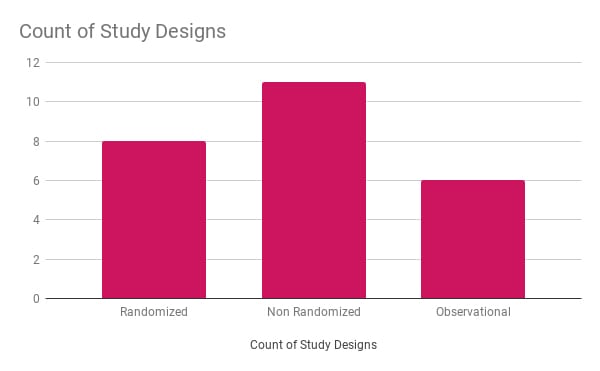
Geography:
Between 2015 and 2020, the United States completed the most number of registered clinical trials, China came in second, Egypt and France came in third. However, as clinical trials are often funded by institutions and government, geopolitics and the impact of the ongoing pandemic will play an important role in the completion of ongoing trials and impact the geomap of future new trials. For example, at least two U.S. based trials were recently withdrawn due to COVID-19 restriction. A time-lapse view of this map in the near future will be interesting.
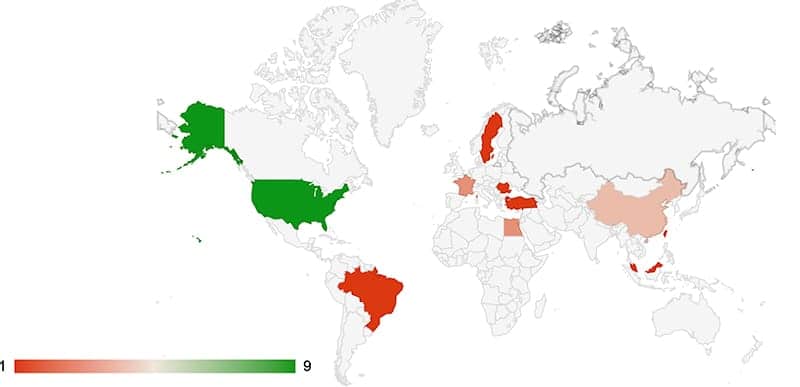
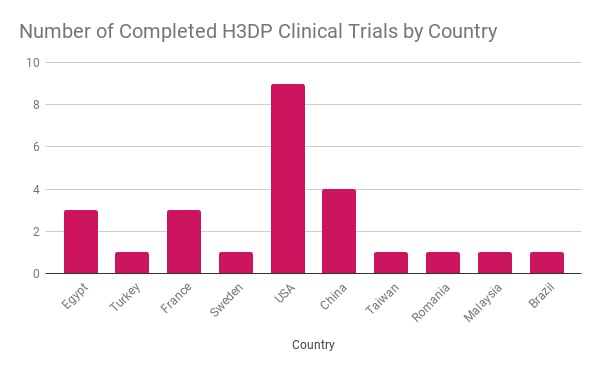
Specialties:
What is the killer app? In the history of healthcare 3D printing, Align Technology is the poster child of commercial success and followed by orthopedic implants. There is also huge momentum behind dental 3D printing. The top three completed clinical trials by specialty reflect these under-current, with digital dentistry top the chart, followed closely by orthopedics and cardiothoracic surgery.

Related Articles:
Healthcare 3D Printing Clinical Trials
Road to Reimbursements for 3D Printed Anatomical Models and Surgical Guides – Decoding the CPT Codes
Idea to Implementation: Reimbursement, the Elephant in the Room




 Jul 29, 2020
Jul 29, 2020 
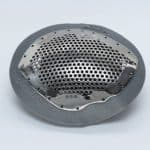



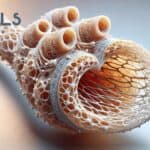

Comments